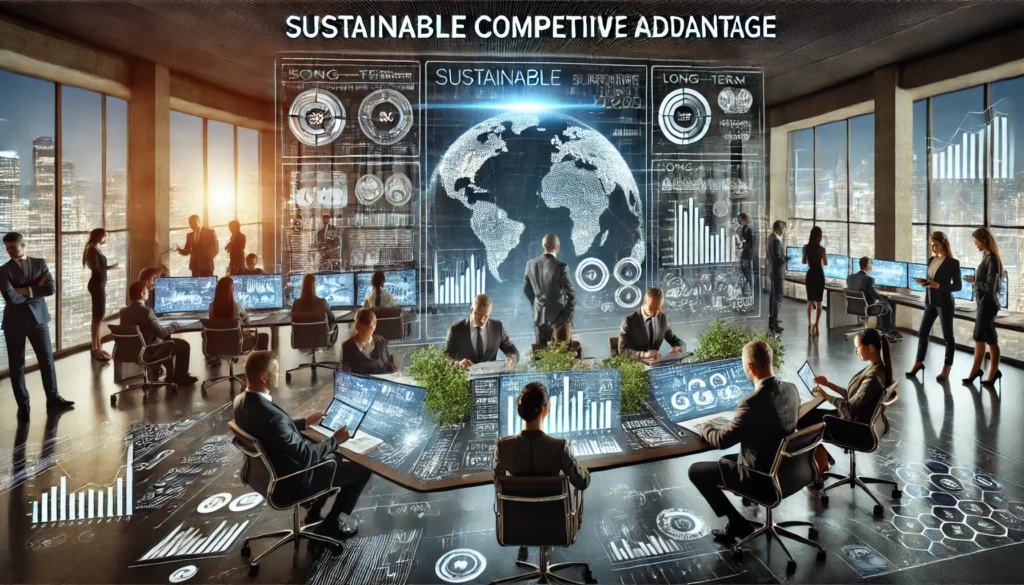The ability for businesses to stay superior in competition over time is called sustainable competitive advantage but this requires being different from competitors. The research at Harvard Business School shows organizations succeed over their market competitors by establishing distinct strategies combined with low-cost operations along with powerful branding systems. Organizations with properly designed cost leadership strategies produce outstanding products at reduced costs which attracts customers interested in the lowest prices.
Companies that properly select their market segment maintain durable customer relations. A business can achieve enhanced customer devotion by implementing powerful branding while having the ability to raise the prices customers must pay. Competing in the current business environment demands that companies evaluate their strategies until they reach perfection to maintain market dominance. Businesses that unite Corporate Social Responsibility (CSR) with innovative approaches and adaptive strategies will establish dominance in their industry. An effective approach and steady advancement bring about sustainable business development alongside profitability.
Building a Sustainable Competitive Advantage Through Differentiation and Long-Term Strategy
A sustainable competitive advantage is vital for long-term success and makes businesses better than any competitor. Porter suggests that differentiation in a product or service gives companies an independent market position. Companies creating value beyond price through branding, quality, or innovation gain a comparative advantage and are difficult to match by others.
A strong long-term strategy will ensure that businesses maintain their sustainable competitive position. Companies must shift from short-term gains to continuous improvement, customer loyalty, and market adaptation. Businesses strengthen their comparative advantage and secure a dominant market presence by differentiating through superior product or service offerings. Strategic planning will ensure resilience against competition, reinforcing a company’s competitive advantage over time.
Achieving a Sustainable Competitive Advantage Through Cost Leadership, Innovation, and Customer Loyalty
A lasting competitive advantage emerges from cost leadership that allows businesses to provide affordable goods or services with equivalent quality to consumers. Businesses that maintain high value in their production systems will draw customers who value price. The focus on affordability through this strategy allows business success by creating and maintaining robust market positions while establishing long-term profitability through efficiency and reduced unnecessary expenses.
A successful firm depends on its capability to maintain leadership positions through constant innovation. Companies that update their products through technological innovations or process improvements and new features continue to lead their markets. The combination of customer-oriented innovation and contemporary business frameworks enables organizations to achieve flexible operations and superior performance which creates obstacles for opposing companies to duplicate their achievements.
A business needs customer loyalty to maintain its position ahead of competitors. Customer retention improves when a service provider delivers personalized experiences through strong relationships with its customers. A strong focus strategy develops long-term customer relationships through constant meaningful delivery. Organizations that devote themselves to meeting customer requirements deliver superior service while building trust with customers create enduring customer loyalty that secures their lasting market advantage.

Strengthening Market Position Through Branding, Technology, and Business Agility
A business secures sustainable competitive advantage by creating robust market brands and strategic market positioning. Michael Porter states that differentiation combined with economies of scale allows businesses to maintain competitive strength through cost efficiency and market distinction. The established brand increases confidence levels among customers and provides loyal behavior and enhances market visibility which drives company success in competitive markets and facilitates long-term growth.
A technology system that incorporates an adaptable business model allows cost leadership through market flexibility in dynamic market conditions. Business organizations adopting flexible business innovations can enhance operational performance and customer service through scalable models. Companies utilize digital transformation together with automation and AI to build durable competitive advantages which let them remain ahead of industry disruptions.
Building a Lasting Competitive Advantage Through CSR, Measurement, and Strategic Action
Corporate Social Responsibility (CSR) integration enables businesses to gain a sustainable competitive edge which makes them distinctive compared to rivals. Studies at Harvard Business School demonstrate that businesses which put ethical practices first together with sustainability and community engagement gain dedicated customers. CSR practices strengthen brand customer loyalty which gives companies room both to stand uniquely in the market and charge elevated product prices.
Trackable measurement of sustainable competitive advantage leads to continued business success. Businesses must conduct an assessment of their market sector along with financial operation analysis and evaluation of customer satisfaction metrics. Companies build their cost leadership strategy by permanently improving their operational methods coupled with market trend adaptions. Routine assessment enables companies to transform their operations while holding their primary market position which leads to long-term success.
Organizations need to take necessary steps in order to establish sustainable competitive advantages. Companies need to dedicate resources into innovative initiatives and branding strategies along with CSR investments in order to maintain distinctiveness from their competitors. Business growth occurs when organizations select targeted market segments while maximizing their cost leadership approach. Companies that execute their strategic plans and stay adaptable while keeping their customers’ trust secure industry dominance during long periods.


